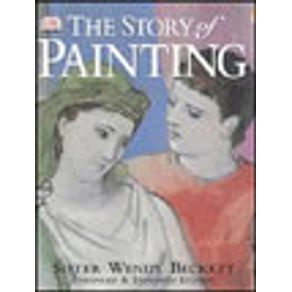Sinopse
For those who've enjoyed the original, the good news is that the new edition of The Story of Painting has grown by more than 300 pages of photographs--magnified close-ups of details from nearly half the 450 paintings in the book. Fauvist paint strokes become mighty slabs; sparkling light on a Dutch still life is revealed as a series of tiny dots; the cheeks of a young man in an Italian Renaissance portrait betray a touch of five o'clock shadow. This kind of close looking is seductive, and it's an important part of Sister Wendy's direct, unpretentious approach to art. As a history of painting, Sister Wendy's book has its strong points (works with religious or spiritual themes and those that lend themselves to psychological interpretation) as well as its lapses (a very skimpy discussion of Cubism and inadequate treatment of works from the late 20th century). Even the title is a bit of a misnomer. The painting in question is purely Western; there is nothing here about Indian or Persian miniatures, or the great tradition of Chinese landscapes. But what Sister Wendy alone offers are vivid, personal interpretations that come from a deep well of emotional sympathy with works of art. Who else would notice the way the bagpiper in The Wedding Feast by Pieter Breughel "stares at the porridge with the longing of the truly hungry"? Who else would point out how Venus--the "older woman" pleading with "virile" Adonis not to go off to war in Titian's "Venus and Adonis"--shows us "her superb back and buttocks, beguilingly rounded, full of promise." Rather than portraying Western art as the dutiful production of "masterpieces," she revels in the physicality of paint and the variety of human experience these works represent.
Ficha Técnica
Especificações
| ISBN | 9780751311891 |
|---|---|
| Pré venda | Não |
| Peso | 822g |
| Autor para link | BECKETT WENDY |
| Livro disponível - pronta entrega | Não |
| Dimensões | 23 x 16 x 1 |
| Tipo item | Livro Importado |
| Número de páginas | 736 |
| Número da edição | 2ª EDIÇÃO - 2001 |
| Código Interno | 164602 |
| Código de barras | 9780751311891 |
| Acabamento | HARDCOVER |
| Autor | BECKETT, WENDY |
| Editora | DORLING KINDERSLEY UK |
| Sob encomenda | Não |


